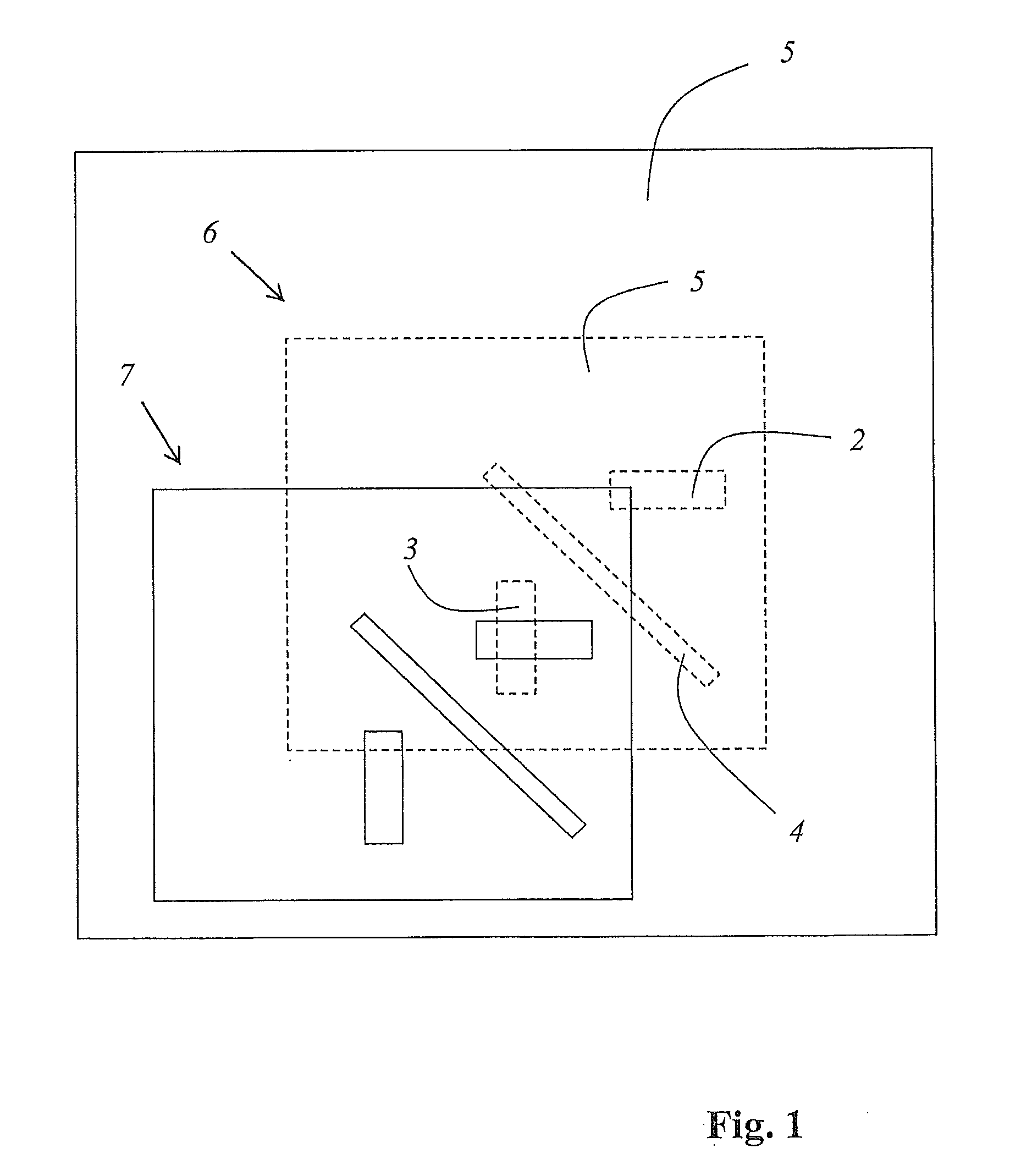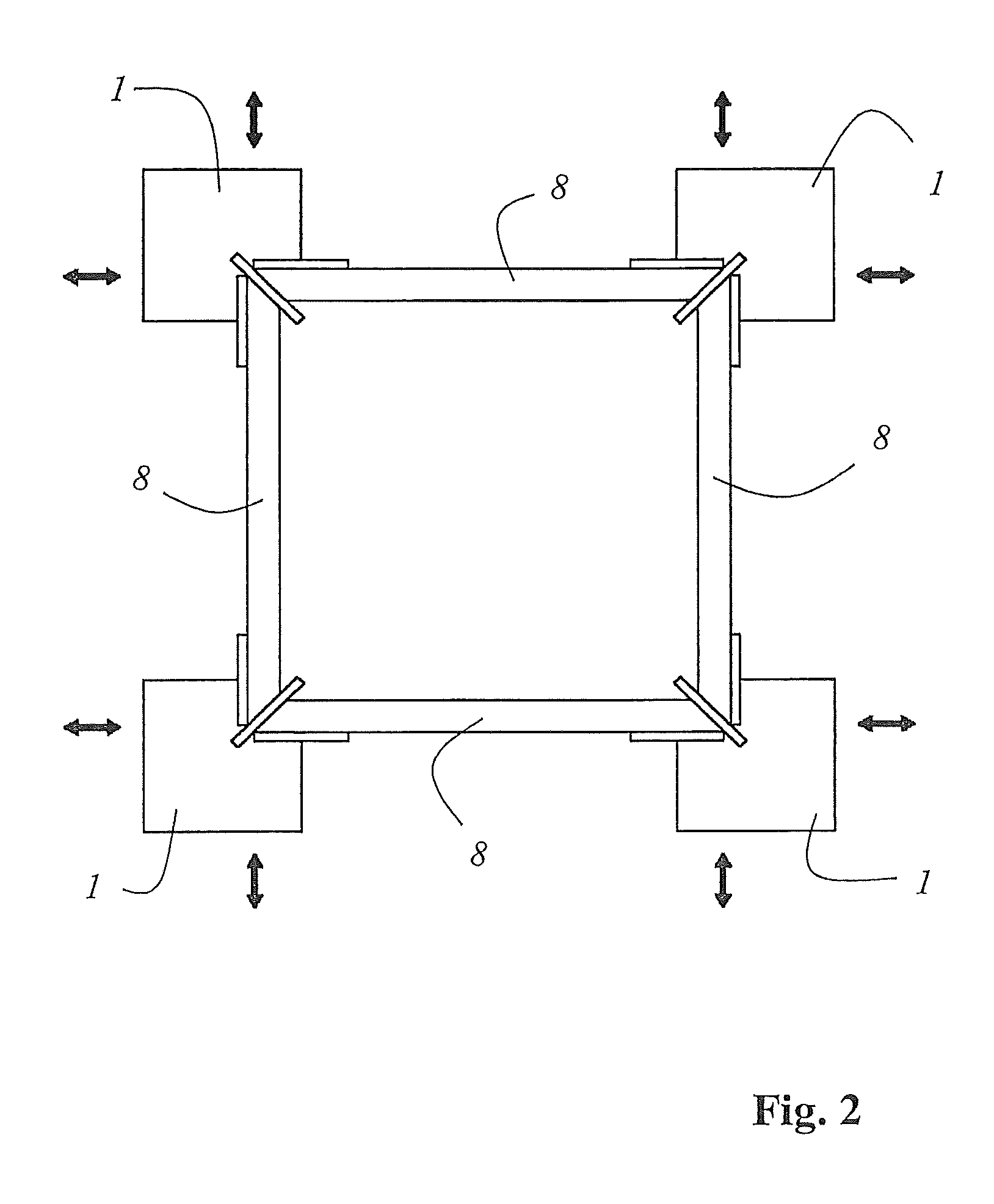Device and method for welding profiled parts
a technology for profiled parts and devices, applied in the direction of mechanical control devices, process and machine control, instruments, etc., can solve the problems of reducing fracture values, affecting the appearance, and no information as to how research findings can be used in actual practice, so as to reduce the total production time, reduce the effect of softening and joining times and reducing the number of times
- Summary
- Abstract
- Description
- Claims
- Application Information
AI Technical Summary
Benefits of technology
Problems solved by technology
Method used
Image
Examples
Embodiment Construction
[0059]FIG. 1 shows the mode of operation of a device according to the invention, on a welding head 1. For the sake of clarity, the welding heads shown are only depicted schematically, with two profile contacts 2, 3 and one profile stop 4. In the case of the devices known from the state of the art, the welding head 1 is positioned in a target welding position shown by a broken line in the figure, and this is done completely independently of dimensional deviations displayed by the profiled parts that are to be welded. In contrast to this, with the device according to the invention, the welding head 1 (and / or parts of the welding head) are positioned within a spatial tolerance area 5 around the target welding position 6 (broken line) as a function of at least one dimensional deviation from a target dimension displayed by at least one of the profiled parts that is to be welded (not shown here). The actual positioning 7 within the tolerance area 5 is shown by a solid line. The positionin...
PUM
| Property | Measurement | Unit |
|---|---|---|
| length | aaaaa | aaaaa |
| time | aaaaa | aaaaa |
| length | aaaaa | aaaaa |
Abstract
Description
Claims
Application Information
 Login to View More
Login to View More - R&D
- Intellectual Property
- Life Sciences
- Materials
- Tech Scout
- Unparalleled Data Quality
- Higher Quality Content
- 60% Fewer Hallucinations
Browse by: Latest US Patents, China's latest patents, Technical Efficacy Thesaurus, Application Domain, Technology Topic, Popular Technical Reports.
© 2025 PatSnap. All rights reserved.Legal|Privacy policy|Modern Slavery Act Transparency Statement|Sitemap|About US| Contact US: help@patsnap.com



